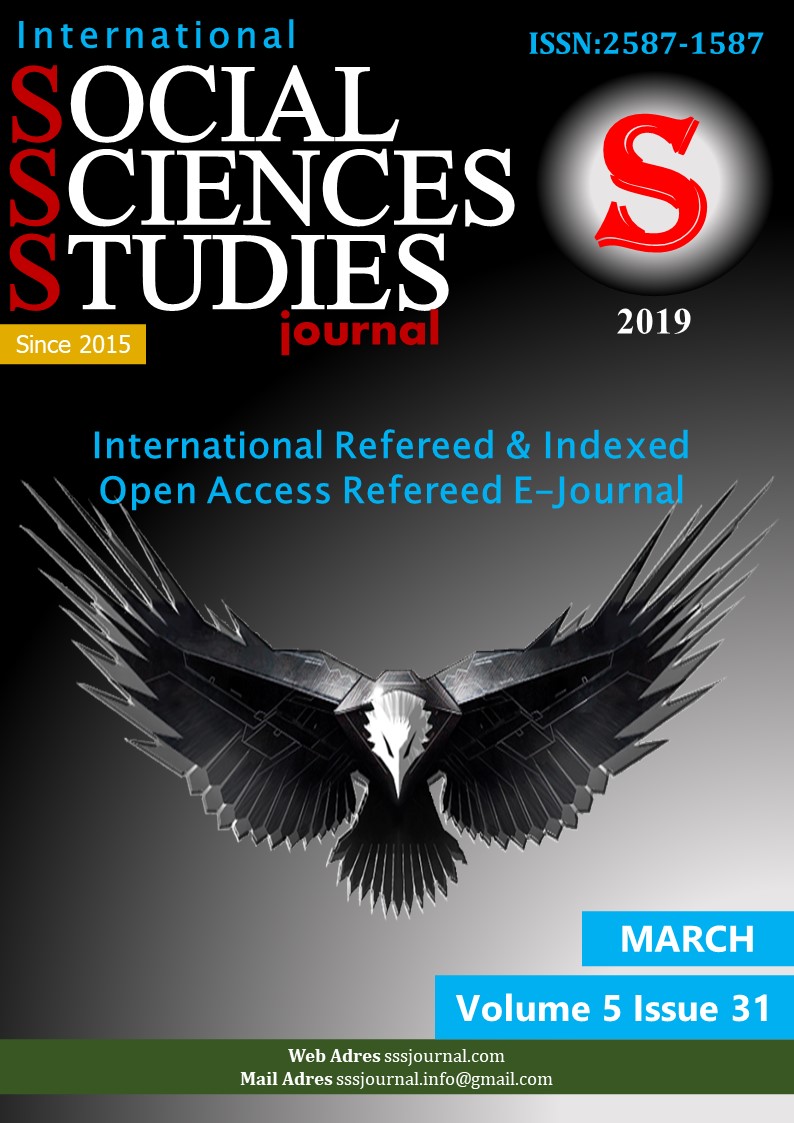Author :
Abstract
Bu çalışmada, Tokat ilinde orta ve alt gelir grubunda yer alan bireylerin şans oyunu oynama davranışları belirlenmeye çalışılmıştır. Analizlerde istatistiksel yaklaşımların yanı sıra ekonometrik yöntemler de kullanılmıştır. Bireylerin şans oyunu onama davranışlarını belirlemek için Ordered Probit Model kullanılmıştır. Elde edilen bulgulara göre; cinsiyet, yaş, şans oyunlarına aylık gelirden ayrılan harcamalar, daha önce ikramiye kazanmış olma, değer yargıları, medeni durum, çocuk sayısı ve gelirin şans oyunu oynama eğilimi üzerinde etkili faktörler olarak belirlenmiştir.
Keywords
Abstract
In this study, middle and lower income group in the behavior of individuals who are determined to play a game of chance in Tokat. Econometric methods, as well as statistical analysis approaches are used. Individuals in a game of chance to play their behavior to determine the ordered probit model is used. According to the findings of our gender, age, monthly income allocated to games of chance expenses, previously won the prize of being, value judgments, marital status, number of children and income tends to be important factors in playing a game of chance is determined.
Keywords
- Akdoğan, A. (1989), Public Finance, 3 Edition, Gazi University Technical Education
- Akdoğan, A. (1989), Public Finance, 3 Edition, Gazi University Technical Education Faculty Printing, Ankara.
- Clotfelter, C. T. ve P. J. Cook (1987), "Implicit Taxation In Lottery Finance", National Tax Journal, Vol. 40.
- Cobin J. (2007), “The Lottery is the Best Tax”, 25 Nisan 2007. (http://www.policyofliberty.net/e- books/The%20Lottery%20Is%20the%20Best %20Tax.pdf).
- Hansen A. (2005), “State-Run Lotteries as a Form of Taxation”, 10 Eylül 2007. (http://www.taxfoundation.org/news/show/1126.html).
- Herekman, S. (1993), National Piyangolar in terms of Public Finance,Unpublished master's thesis, Anadolu University Social Sciences Institute, Eskisehir.
- Morgan, J. ve M. Sefton (2000), “Funding Public Goods with Lotteries: Experimental Evidence”. (http://www.jstor.org/pss/2695948).
- Pickernell D., Brown K., Worthington A. ve Mary Crawford.(2004), Gambling as a Base ForHypothecated Taxation: The UK's National Lottery and Electronic Gaming Machines inAustralia, Public Money & Management, Volume 24, Number 3.(http://www3.interscience.wiley.com/user/accessdenied?ID=118791839&Act=2138&Code=4717&Pa ge=/cgi-bin/fulltext/118791839/pdfstart).
- Ramos F. (2006), 14.Internatioanl Economic History Congress, Helsinki 2006 session 24, AnEmpirical Analysis of Gambling Consumption: National Lottery in Spain. (http://www.helsinki.fi/iehc2006/papers1/Ramos.pdf).
- Sullivan, G. (1972), By Chance A Winner: The History of Lotteries, New York: Dodd, Maaad.Thornton M.(1999), Daily Article, 20 Şubat 2008. (http://mises.org/story/249) Tomlinson T.(2003), The Economic Inequalities of State Lotteries Chrestomathy: Annual Review of UndergraduateResearch at the College of Charleston Volume 2, (http://www.cofc.edu/chrestomathy/vol2/tomlinson.pdf )
- Tunçay, M., “Türkiye'de Kurum Tarihçiliği Sempozyumu 1”, 10 Temmuz 2007 (http://www.tarihvakfı.org.tr/icerikId=103).
- Zavoina, R. ve W. McElvey, (1975) "A Statistical Model for the Analysis of Ordinal Level Dependent Variables," Journal of Mathematical Sociology, Summer, ss. 103-120.
- Ziemba, W. T. (1986), Dr. Z's 6/49 Lotto Guidebook , Vancouver and LosAngeles: Dr. Z. Investments, Inc.





